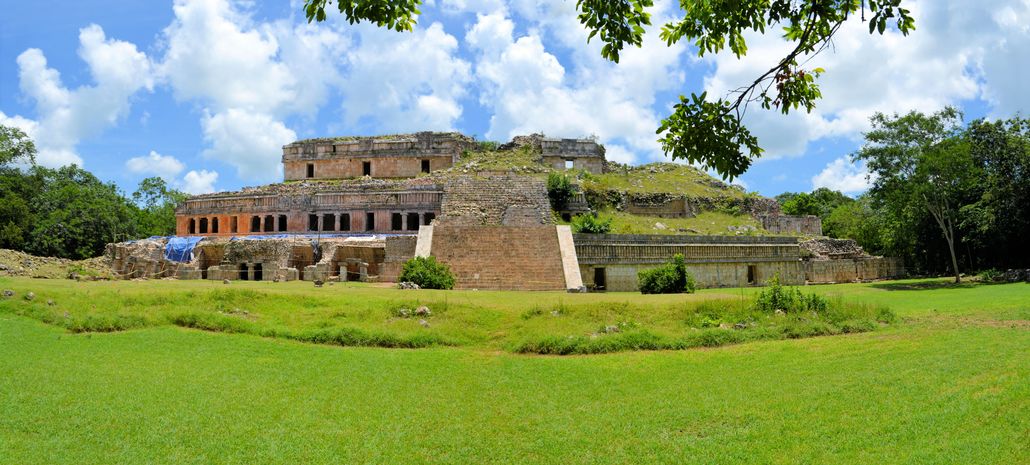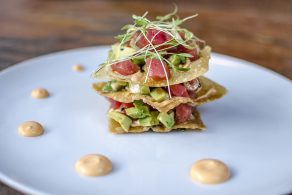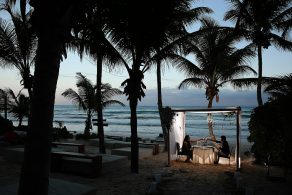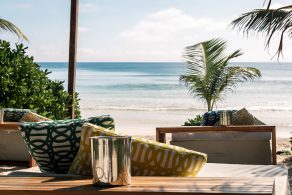
If you have already visited the world famous archaeological sites of Tulum and Chichen- Itza and are interested in learning more about the Maya culture and its architecture, the Puuc route is an excellent option.
The Puuc Route is located one hour drive south of Merida on Highway 261. It is a grouping of five Maya sites from the Terminal Classic period (800–1000 AD), located near each other and sharing an architectural style, known as Puuc Style – all five of these Mayan archaeological sites are part of a UNESCO World Heritage site.
The word Puuc comes from the Maya word for hill, which describes the “hilly” geography of this area.
Characteristics of Puuc Architecture:
- Façades decorated with masks, many of them representing Chaac, the Maya god of rain, with its large and characteristic proboscis-like nose.
- Ornate facades, amazing masks, delicate figures and intricate designs decorate many of the buildings.
- Front walls with hieroglyphs and high crests.
- Columns between entrances and stairways.
- Solid columns and dense smooth walls whose upper parts are decorated with friezes topped by flat corniches and frets.
- Oval and truncated triangle vaults.
- Sculptures of serpents in medium and high relief.
Chaac, the God of rain, was one of the most revered, since the Puuc route area didn’t have other sources of fresh water like rivers, cenotes or lakes. At Uxmal, Sayil and Labná, the Maya built chultunes or reservoirs to contain rain water in order to survive during the dry season.
The Maya cities that conform the Puuc route are: Uxmal, Kabah, Sayil, Xlapak and Labná.
* Uxmal had the greatest economic and political power dominating the entire region. It had an 18-kilometer-long Sak-béh (white limestone road) that communicates Uxmal with Kabah. It is considered a Maya city of first rank, by the extension it occupied and the architectural magnificence of its buildings. It had an extension of 4,600 square miles and a population of about 20,000 inhabitants.
* Kabah is famous for its ornate Temple to Chaac, the Rain God of the Maya, whose facade is covered with repetitious masks of Chaac. It also has palaces, low stone buildings, and step-pyramid temples.
The area was populated by the mid 3rd century BC, but most of the architecture was built between the 7th century and the 11th century. Kabah was abandoned centuries before the Spanish conquered Mexico.
* Sayil, its main structure is called “The Great Palace” with an 85-meter-long facade built upon a two-terraced platform which has 90 bedrooms. Its second most important structure is the temple of “El Mirador” among several other palaces and ball court areas.
* X-Lapak, is located between Sayil and Labná. It has about 14 mounds, a 9 room Palace with intricate facades, and three pyramids. This is a smaller and less preserved site, but still worth visiting.
* Labná was home to about 2,000 people, and has four restored buildings, a two story large palace about 400 feet long with a heavy ornamented gateway arch. This famous arch is about 40 feet wide and 20 feet high. Next to this gateway stands “El Mirador”, a pyramid-like structure and the “Temple of the Columns”.
If, at the end of your visit to the Puuc route you decide to head to Tulum beach to relax for a few days, be sure to plan your last stop at the Loltun Caves, ancient underground caves with stalactites and stalagmites and carvings left by the Maya.
If you are interested in learning more about the Maya culture and its architecture, the Puuc route is the best option to visit different archeological sites.










